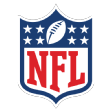The NFL’s three-day negotiating window has grown so efficient that free agency, as we once knew it, is all but over once the market officially opens. At that moment Wednesday, nine of the top 10 members of ESPN’s top 100 free agents — and 17 of the top 20 — had already committed to a team.
The twist in 2019 was a series of trades that stole the headlines. We included those deals in our initial look at the winners and losers of the NFL’s 2019 free agent frenzy. Let’s dive in.
Winners | Losers | On the fence
WINNERS

We always seem to save a spot here for the team that spent the most and/or made the flashiest moves. But the Browns really are a better team now than they were at the end of the 2018 season, having used trades to supersede a mostly humdrum free agent class.
They’ve given quarterback Baker Mayfield one of the game’s top playmakers in Odell Beckham Jr. They’ve fortified an already formidable defensive front by acquiring pass-rusher Olivier Vernon. And don’t forget that at some point, they’ll have tailback Kareem Hunt, who signed last month but is expected to serve an NFL suspension for a portion of the season.
New coach Freddie Kitchens will be challenged to meld a bunch of edgy personalities, and there is some franchise inertia still to overcome, but for the first time in a quarter century, the Browns are legitimate playoff contenders.

Safeties and non-rush linebackers
Recent history suggested that teams wouldn’t see value in this year’s big class of free-agent safeties. And reasonable people could debate the wisdom of paying top dollar to linebackers who don’t rush the passer.
But the safety market exploded, starting with Landon Collins‘ six-year, $84 million deal with the Redskins and continuing with good contracts for Kenny Vaccaro (four years, $26 million from the Titans), Tyrann Mathieu (three years, $42 million from the Texans), Lamarcus Joyner (four years, $42 million from the Raiders) and Tashaun Gipson (three years, $22.5 million from the Jaguars).
Meanwhile, the Jets gave linebacker C.J. Mosley $85 million over five years, and the Vikings re-signed linebacker Anthony Barr to a deal that will at the very least pay him $16 million for 2019 (after he reversed an earlier decision to sign with the Jets). Mosley and Barr have a total of just 22 sacks in 148 career games, normally the metric that dictates salaries for linebackers, but the Jets and Vikings saw past those numbers.

This week boosted the Eagles‘ starting quarterback on a number of levels.
First, the backup who was more than just a backup finally moved on. Nick Foles agreed to terms with the Jaguars, and while there was never any indication of unease between the two signal-callers, the Eagles’ decision to let Foles leave cleans up any lingering doubts about Wentz despite a series of injuries during the past two seasons.
Second, Wentz will surely be aided by the acquisition of receiver DeSean Jackson, still one of the best downfield threats in the game. As Warren Sharp of Warren Football Analysis noted, Jackson excels at the routes that Wentz has thrown best during his career, namely the out and fly.

Star leverage
Trades involving wide receivers Antonio Brown and Beckham — along with linebacker Khalil Mack back in September — suggest a growing pattern: NFL players are getting better at plowing their way out of undesired situations, regardless of contract status, and coming out better on the other side.
The Raiders upgraded Brown’s contract following his trade, and there have been reports that the Browns might do the same for Beckham after landing him on Tuesday. Such tactics won’t necessarily work for the league’s middle class, and not everyone will have the stomach to follow through. But for disgruntled stars, at least, the path isn’t as bleak as it once appeared. Forcing a trade was, however, more effective this year than holding out for free agency, at least in running back Le’Veon Bell‘s case.

Sometimes you win for the moves you don’t make.
The Patriots were more than happy to sit back and allow left tackle Trent Brown to be squired away by the richest contract for a lineman in NFL history, much as they were last year when they bid farewell to Nate Solder. The same goes for their best pass-rusher, defensive end Trey Flowers, who agreed on a five-year, $90 million deal with the Detroit Lions.
It takes incredible discipline to sit tight while players at those positions walk away, but the upside is that it prevents overpayment that eats into other priorities across the roster. It would be a questionable strategy if the Patriots hadn’t shown, multiple times over the years, that they’re capable of identifying and developing cheaper replacement players.
LOSERS

If the best organizations follow a clear vision, then what can we say about the Giants?
A year ago, they were bulking up to make one final run with quarterback Eli Manning, making a series of decisions that included giving Beckham a five-year contract extension. This week, they began a fire sale with Manning still as their quarterback (at least for now). And the acquisitions of safety Jabrill Peppers, guard Kevin Zeitler and additional first- and third-round picks in no way compensate for the departures of Collins, Vernon and Beckham.
The Giants now have one of the NFL’s least-talented rosters, and hope for improving it is limited by their decision to let Collins walk away (rather than making a trade) and settling for a modest return in the Beckham trade. They don’t seem to be following a linear plan and are years late on initiating a succession plan at quarterback. It is as though the Giants — and general manager Dave Gettleman in particular — are operating in a long-discarded era of NFL team-building.

Bell almost certainly cost himself millions of dollars by holding out in 2018.
Perhaps it was worth it to him in avoiding again playing for the Steelers. Or perhaps it will get more money guaranteed in his next deal. But his four-year, $52.5 million contract falls short of a win. He’s not even the NFL’s highest-paid running back. The Rams‘ Todd Gurley maintains that spot with an annual average of $14.5 million, compared to Bell’s $13.1 million.
It’s difficult to project how Bell will make up the money he would have earned by either signing the Steelers’ final offer, which reportedly would have paid him between $14 million and $15 million annually, or by playing at the $14.55 million franchise number for 2018. The gambit kept him healthy and got him out of Pittsburgh, but it failed to generate the kind of bidding war that would have allowed him to come out ahead financially.

Offensive linemen who didn’t get to free agency
NFL teams are so desperate for competent line play that, once again, they tore at the handful of available starters like a bunch of hyenas.
The Raiders made Trent Brown, whose primary attribute was that he started 16 games at left tackle for the Super Bowl champions, the highest-paid offensive lineman in league history with a four-year, $66 million deal. The Packers gave Billy Turner, a swing guard/tackle, a four-year deal worth $28 million. The Bengals signed right tackle Bobby Hart to a three-year deal worth $21 million. (Neither Turner nor Hart cracked ESPN’s list of the top 100 free agents.)
Those numbers should stand out to the league’s upper echelon of linemen, most of whom signed contract extensions long before reaching free agency. Imagine what a player like Packers left tackle David Bakhtiari, an All-Pro in 2018, could have gotten on the open market. (Like many players, Bakhtiari’s signed an extension before his rookie deal expired. The deal he agreed to in 2016 pays him an average of $12 million annually, compared to Brown’s average of $16.5 million.)

AFC North royalty
Either the Steelers or Ravens have won the AFC North in 13 of its 17 seasons in existence. But they both took big hits over the past week, while a new competitor emerged before their eyes.
The Steelers capitulated to one of the best players in their recent history, shipping Brown to the Raiders for a return (third- and fifth-round picks) that will make it difficult to even nearly replace his impact. The Ravens, meanwhile, bid farewell to four key players — Mosley, safety Eric Weddle, linebacker Terrell Suggs and linebacker Za’Darius Smith — from a defense that carried it to the playoffs last season.
1:16
Adam Schefter reports on Earl Thomas’ intent to sign a 4-year, $55 million deal with the Ravens.
Both the Steelers and Ravens could pick through the remaining market and then replenish during the draft. The Ravens already have, to an extent, after agreeing to terms with oft-injured safety Earl Thomas and veteran running back Mark Ingram. But the rise of the Browns as a legitimate division contender, for the first time in a quarter century, leaves much less room for error.
ON THE FENCE

The Titans were one of the most active teams in the NFL this week, making three major deals by signing offensive lineman Rodger Saffold, receiver Adam Humphries and defensive end Cameron Wake while also re-signing Vaccaro at safety. I’m just not certain what to make of it.
On the one hand, giving Wake $10 million guaranteed at age 37 seems excessively hopeful. But on the other, giving relatively inaccurate quarterback Marcus Mariota a productive slot receiver in Humphries seems like a good idea. And Saffold, assuming he is healthy, fits the smash-mouth run style that the Titans are expected to pursue.
I understand the Titans’ incentive after they were in the AFC South division race until Week 17 last season. But will this eclectic haul do anything to push them past the Texans and Colts? We’ll leave the Titans in the winner/loser purgatory for now.

Earlier this week, it appeared Bridgewater was all set to return to the Saints for a second season as Drew Brees‘ backup. But the Dolphins have reportedly talked him into visiting their facility amid the likelihood that new coach Brian Flores will open up the starting job. If so, Bridgewater faces a complex and difficult decision.
He hasn’t taken a meaningful snap since 2015, and returning to New Orleans means a commitment to spending a fourth consecutive season on the sideline, with no guarantee that he would replace Brees in 2020. But should he get on the field, the Saints’ offensive infrastructure offers a far better template for success than the Dolphins, who appear to be at the start of a long rebuilding process.
What’s better for Bridgewater’s long-term goal to be a starter: Getting back on the field before he is permanently classified as a backup or setting up the best possible environment for success if he does get on the field? Both options are fraught with risk.

